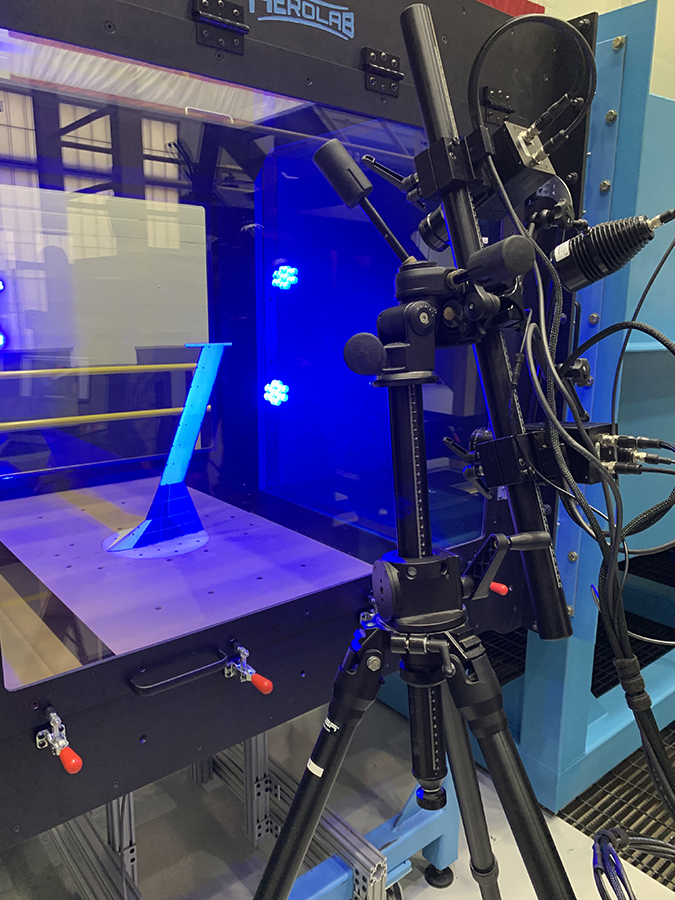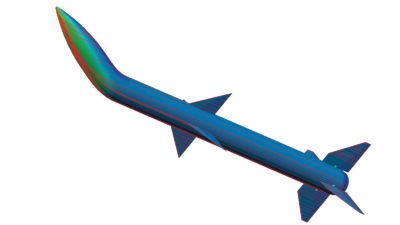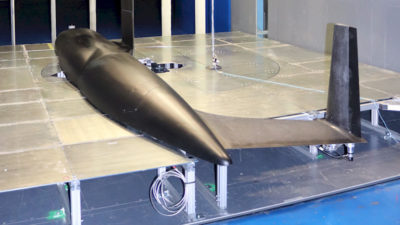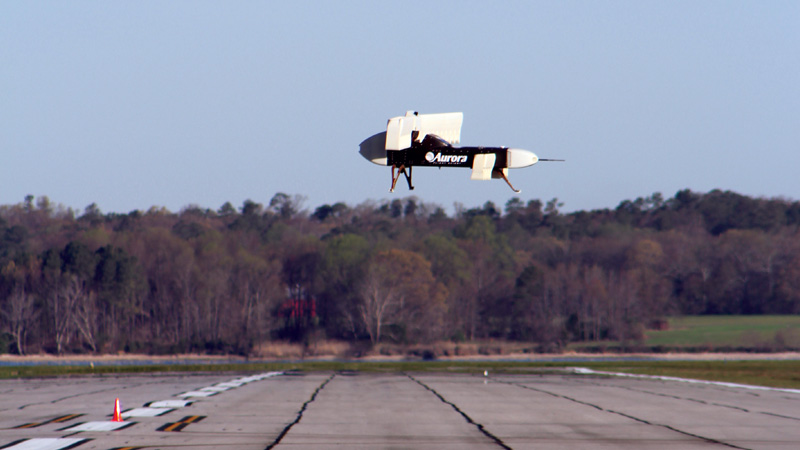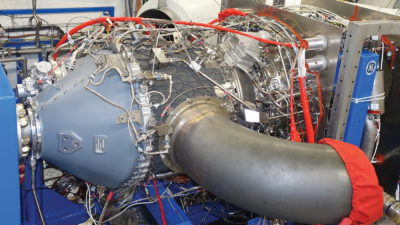Rapid aeroelastic testing, metamaterials, and design and analysis headline the year’s activities
By Daniel L. Clark|December 2023
The Non-Deterministic Approaches Technical Committee advances the art, science and cross-cutting technologies required to advance aerospace systems with non-deterministic approaches.
In January, the U.S. Air Force Research Laboratory conducted a risk reduction test in the Parker Subsonic Research Facility wind tunnel at Wright-Patterson Air Force Base in Ohio. The test was part of investigations into rapid vehicle configuration design-to-test aeroelastic phenomena, such as flutter. The test was also among a series of firsts at AFRL: the first wind tunnel test with both statically and dynamically aeroelastically scaled models and the first wind tunnel test using both noncontact measurement and optimized additively manufacture models to show rapid-cycle and low-cost configuration measurement.
In January, researchers from Pennsylvania State University, the Argonne National Laboratory in Illinois and Florida State University published their method of estimating the reliability of complex systems at reduced costs in the Journal of Computational Physics. Previously, gas turbine blade reliability was estimated via an expensive high-fidelity model. The researchers applied a multifidelity Gaussian process-based approach to show that a combination of low- and high-fidelity models can estimate system reliability more accurately and with up to 50 times reduced computational cost, compared to the high-fidelity model alone.
In February and May, researchers from the University of California, San Diego introduced two methods to compute risk for structures including riveted silicon carbide composite plates for high-dimensional dependent random inputs (up to 30). Via surrogate models, they estimated the risk of damage to a fiber-reinforced composite laminate 20 times faster than conventional methods.
Also in May, Northrop Grumman air vehicle designers demonstrated the trades of analyzing two Air Force-relevant configurations with the uncertainty quantification, or UQ, method. The work was conducted under AFRL’s Enabling Quantification of Uncertainty in Aerospace Technology Evaluation program. The integration of UQ into multidisciplinary design, analysis and optimization framework for mission effectiveness highlighted the relationship between design decisions, uncertainty and design margin.
In July, a computational materials design team at Virginia Tech’s ASTRO Lab proposed a methodology to quantify the variations of the structural properties of cellular mechanical metamaterials as a result of manufacturing defects. The uncertainty in the resulting mechanical performance was predicted accurately by a surrogate model trained with physics-based simulation data. The proposed method estimated the uncertainty affecting a combination of multiple structural properties. The propagation of this manufacturing-related uncertainty was mathematically modeled as the variations captured by an N-dimensional material properties space.
In September, researchers from NASA’s Langley Research Center in Virginia completed Technical Challenge 1 under the agency’s Hypersonic Technology Project. The System-Level Uncertainty Quantification and Validation challenge spanned six years and had two primary objectives: develop tools and techniques for assessing uncertainty of complex hypersonic systems and develop a workforce versed in UQ practices. Key achievements included development of multiple approaches for efficient UQ, a novel validation metric for mixed uncertainty, initial development of a new UQ tool suite and the application of UQ to multiple complex problems related to hypersonic systems. Members of the challenge team received a NASA group achievement award, and the work has generated interest and engagement from academia and other U.S. government agencies.
Contributors: Pinar Acar, Edwin Forster, Boris Kramer, Alex Pankonien, Ashwin Renganathan, Tom West and Laura White

